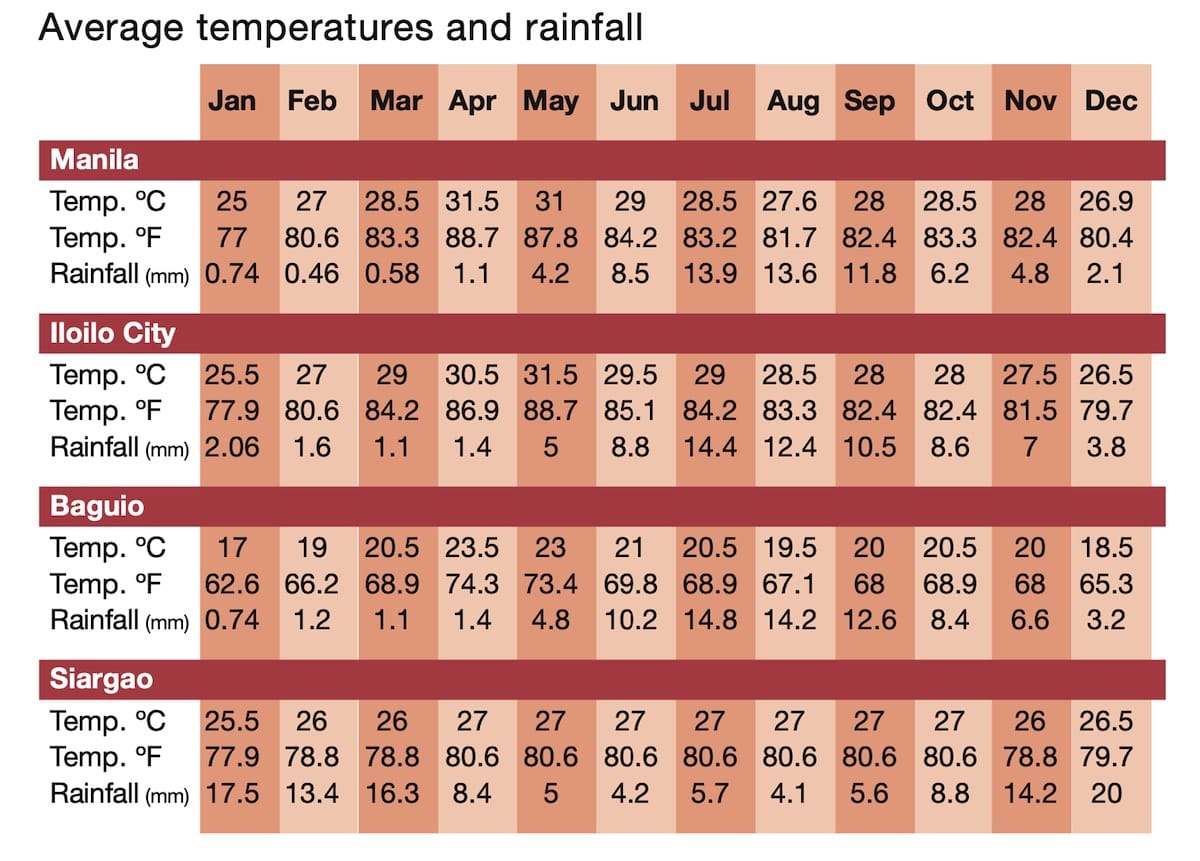Newsletter Subscribe
Enter your email address below and subscribe to our lovely newsletter.
*We do not spam & you can unsubscribe at any time.
Enter your email address below and subscribe to our lovely newsletter.
*We do not spam & you can unsubscribe at any time.

*This post may contain affiliate links. If so, we may earn a small commission when you make a purchase through links on the site. This is at no additional cost to you. Read full disclosures here
The Philippines has a tropical marine climate characterised by two distinct seasons: the wet season (southwest monsoon, or habagat) from May to October and the dry season (northeast monsoon, or amihan) from November to April.
Obviously the best time to visit is during the dry season, although even during the wet season it doesn’t always rain torrentially and days can be hot and sunny, with short, intense downpours at dusk. And the dry season isn’t dry everywhere. Areas facing northeast – Siargao in Mindanao is a good example – have no clear-cut dry season and see their heaviest rains between November and March, while most of the rest of the country basks in hot sunshine.The biggest threat during the wet season is from typhoons: the country is hit by five or six and affected by an average of fifteen during the wet season, with flights sometimes cancelled and roads impassable.The first typhoon can hit as early as May, although typically it is June or July before the rains really start, with July and August the wettest months. The southern Visayas and Palawan are less prone to this danger, and Mindanao sees less rain during the wet season and no typhoons.
Temperatures remain fairly high throughout the year, except in the mountains, but excessive heat is rare.The worst feature of the climate, apart from the occasional typhoon, is the high humidity and clouds during the rainy season. January and February are the coolest months and good for travelling, while March,April and May are very hot: expect sunshine all day and temperatures to peak at a broiling 36°C.
Weather bulletins are issued by the Philippine Atmospheric, Geophysical and Astronomical Service in Quezon City, known by the abbreviation PAGASA, which also means “hope”. Storm warnings range from one up to four.When storm warning two or above is issued all schools and many offices shut down and ferries stop sailing.

Save up to 60% using this link

Encrypt your data when online +
Start enjoying UK T.V. from abroad, including:
BBC iPlayer, ITV Hub, Netflix (UK) (USA) and more.